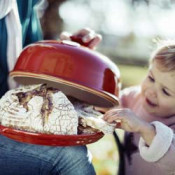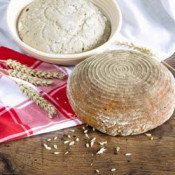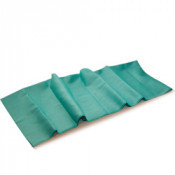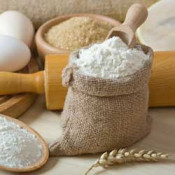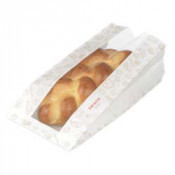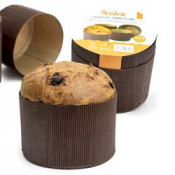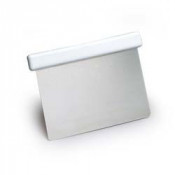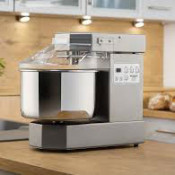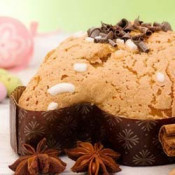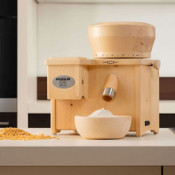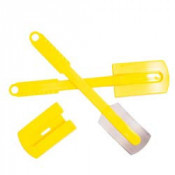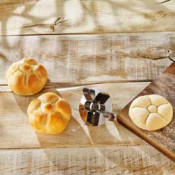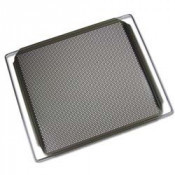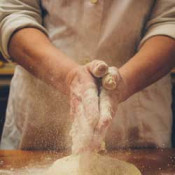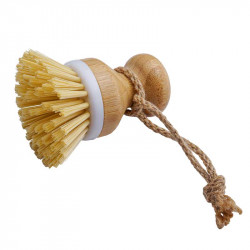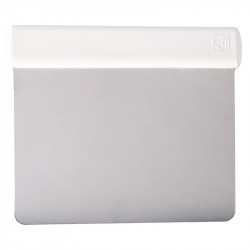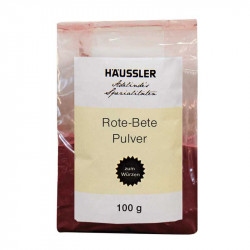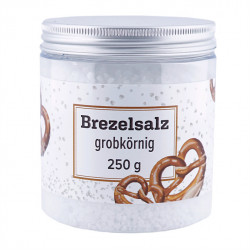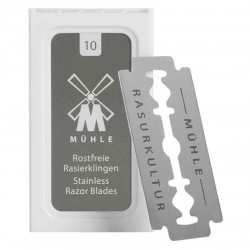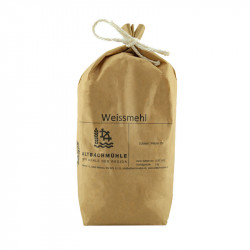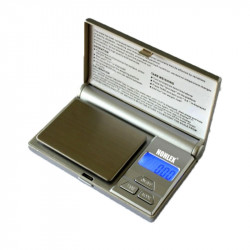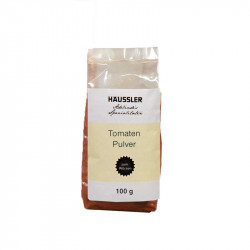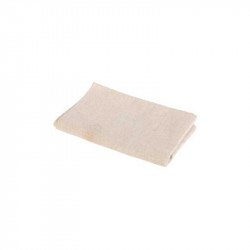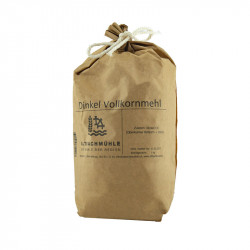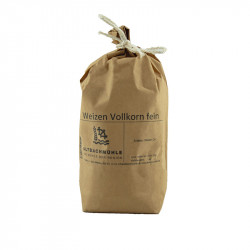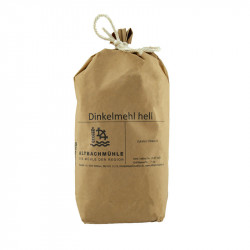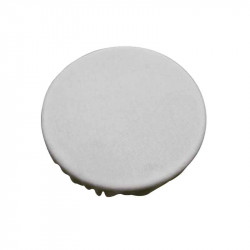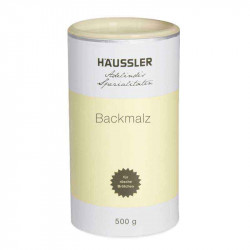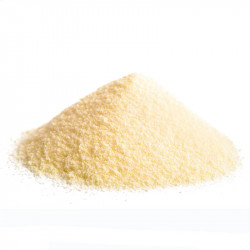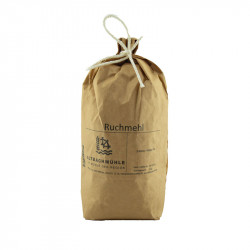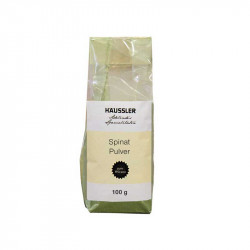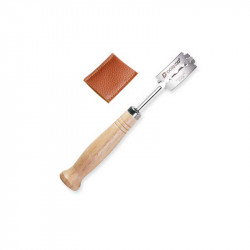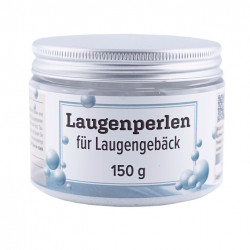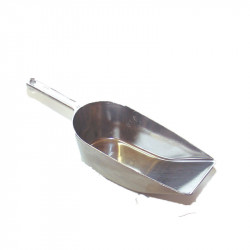Bread
Unterkategorien
How to bake good bread?
Baking bread requires a certain amount of experience and practice to achieve a good result. Here are some basic steps to bake good bread:
1. Prepare ingredients: Make sure you use high quality ingredients, such as flour, yeast, water and salt. You can also add extra ingredients like seeds or nuts to add flavor and texture to the bread.
2. Knead dough: Mix the ingredients well and knead the dough until it is elastic and smooth. This can be done by hand or with a food processor.
3. Let dough rest: Let the dough rest, covered, in a warm place until it has doubled in volume. This step, also called "letting it rise," allows the yeast to work and the bread to rise.
4. Shape and let rise: Shape the dough into the desired bread shape and let it rise again until it has doubled in volume again. This can take anywhere from 30 minutes to several hours, depending on the recipe and ambient temperature.
5. Bake: Preheat the oven to the proper temperature and put the bread in. Bake it until it has a golden brown crust and sounds hollow when you tap the bottom. The exact baking time will vary depending on the type of bread and the oven.
6. Let cool: Remove the bread from the oven and allow it to cool completely on a cooling rack before cutting. Cooling allows the bread to distribute its moisture and develop a soft crumb.
There are countless variations and methods in bread baking, so it is advisable to try different recipes and develop your own techniques to find your perfect bread.
What does it take to make good bread?
For a good bread you need, among other things, the following ingredients and materials:
- Flour: High quality flour is essential for bread quality. Depending on the type of bread you want, you can use different types of flour such as wheat flour, spelt flour, rye flour, etc.
- Water: The bread dough needs enough moisture to bind properly. Normal tap water is sufficient.
- Yeast or sourdough: Yeast is a leavening agent that makes the dough rise. Alternatively, sourdough can be used, which gives the bread a special taste.
- Salt: Salt gives the bread a pleasant taste and regulates the fermentation process.
- Sugar or honey: A small amount of sugar or honey can support the yeast process and give the bread a slightly sweet note.
- Fat: Some breads also contain fat in the form of oil or butter, which gives the dough suppleness.
- Equipment: For the preparation you usually need a mixing bowl, a work surface, an oven or a bread machine. A bread baking stone can help create a crispy crust.
However, this list is not exhaustive, as there are countless variations of bread that can be enhanced with additional ingredients such as grains, nuts, fruits or spices. The exact preparation technique and the proportions of the ingredients are also crucial to bake a good bread.
What ingredients are important for a good bread?
The following ingredients are important for good bread:
1. Flour: Wheat flour is typically used, but other types of flour such as rye or spelt flour can also be used.
2. Yeast or sourdough: This ingredient promotes fermentation of the dough and gives the bread volume. Yeast is the most common choice, but sourdough can add flavor and shelf life to bread.
3. Water: Water serves as a source of moisture and helps the dough ferment.
4. Salt: Salt improves the flavor of the bread and also helps regulate fermentation.
5.. sugar or honey: these ingredients promote yeast activity and improve the taste of the bread.
6. fat: butter, oil or other fats make the bread juicier and extend its shelf life.
It is important to use high quality ingredients to obtain good bread. The exact proportions vary depending on the recipe and personal preferences.
What is the best bread recipe?
There are many different types of bread recipes, and the "best" bread recipe depends greatly on personal preference. Some popular bread recipes are:
- Sourdough bread: This bread is made with a fermented dough and has a sour taste. It requires a little more time and patience as the sourdough needs time to mature.
- Whole Wheat Bread: This bread is made with whole wheat flour and is rich in fiber and nutrients. It often has a strong flavor and a dense texture.
- Baguette: A classic French bread with a crispy crust and airy texture inside. It requires a special technique to achieve its characteristic shape.
- Rye Bread: This bread is made primarily from rye flour and has a strong, spicy flavor. It is very popular in Northern Europe, especially in Scandinavia and Germany.
There are countless other bread recipes that vary by country and region. It is worth trying different recipes to find the bread that best suits your taste.
How to bake good bread at home?
To bake good bread at home, there are some important steps and tips to follow:
1. Use quality ingredients: Choose quality flour and fresh yeast or sourdough as the base for your bread. Water and salt should also be of good quality.
2. Mix the ingredients properly: Knead the flour, salt, yeast (or sourdough) and water together thoroughly to get a homogeneous dough mixture. Avoid kneading too much, as this can result in a tough bread.
3. Let the dough rest properly: let the dough rest in a warm place to give it time to rise. This will allow the yeast or sourdough to develop and the bread to increase in volume.
4. Shape the bread properly: After the dough has rested, shape it into the desired bread shape. Make sure the surface is smooth and cut in with flour or water if necessary to create nice cracks during baking.
5. Bake the bread at the right temperature: Preheat the oven to the right temperature depending on the type of bread you are baking. An oven that is too hot can burn the bread, while an oven that is too cold can result in underbaked bread.
6. Control the baking time: each bread is different, so you may need to adjust the baking time. Keep an eye on the bread and monitor its progress regularly to make sure it is not baked too long or too short.
7. Let the bread cool: After the bread is removed from the oven, let it cool completely on a rack before cutting or serving. This will allow the moisture in the bread to distribute and keep it nice and moist.
By following these steps and having some practice, you can bake a delicious and flavorful bread at home.
What mistakes can happen when baking bread?
Several mistakes can occur during bread baking:
1. Use of wrong ingredients: Using the wrong or inferior ingredients can affect the end result, such as inferior flour, old baking powder, or improperly proportioned liquids.
2. Over-kneading the dough: Kneading the dough too long can make the bread too firm or too tough. It is important to knead the dough only until it is smooth and elastic.
3. Not kneading enough: If the dough is not kneaded enough, the bread may become crumbly or dense and not rise properly.
4. Incorrect amount or quality of yeast: The wrong amount or inferior quality yeast may cause the bread to not rise properly and not be fluffy.
5. Incorrect fermentation or resting time: Fermenting the dough too short or too long may affect the bread. The dough needs enough time to rise, but too long a rest period can lead to overdeveloped yeast activity and make the bread sour.
6. Baking temperature too high or too low: The wrong baking temperature can cause the bread to burn or not cook properly. It is important to pay close attention to the baking temperature.
7. Too little or too much liquid: The right amount of liquid is critical to properly bind the dough. Too little liquid will result in a dry and crumbly bread, while too much liquid can result in a sticky and heavy dough.
8. Too little or too much salt: The right amount of salt is important for the taste of the bread. Too little salt can make the bread taste bland, while too much salt can overpower the flavor.
9. Lack of steam in the oven: Steam in the oven provides a crispy crust. If there is not enough steam, the crust may become too hard or dry.
10. Cutting or serving too quickly: The bread should be allowed to cool completely before cutting and serving, otherwise it may result in a sticky or soggy crumb.
What special materials and equipment are needed for baking bread?
When baking bread, you need the following special materials and equipment:
1. Mixing bowl: A large bowl in which to knead and stir the dough.
2. Baking pans: A special ramekin or container to shape and bake the dough in.
3. Cutting board and knife: To cut and shape the dough.
4. Dough card: A special card to smooth and shape the dough.
5. Baking paper: To line the baking pan or tray so the bread does not stick to it.
6.. proofing baskets: Special baskets for letting the dough rise.
7. Dough scraper: For mixing and removing the dough from the bowl.
8. Dough roller: For rolling out the dough for flat breads such as flatbread or pizza.
9. Thermometer: For checking the temperature of the water or oven.
10. Baking Stone: For a more professional baking method, a baking stone can be used to bake the bread evenly.
11. Food Processor: A food processor with a dough hook can knead the dough faster and more efficiently.
12. Whisk: For mixing ingredients and beating eggs.
13. Baking Brush: For applying egg yolk or water to the bread crust for a shiny finish.
14. Bread Knife: For cutting freshly baked bread.
15. Scale: For accurately weighing ingredients.
These are just some of the special materials and equipment that can be used in bread baking, depending on the recipe and personal preference.
How to season a bread?
There are several ways to season bread. Here are some ideas:
1. Herbs and spices: Add dried or fresh herbs such as basil, oregano, thyme or rosemary. Also experiment with spices such as garlic powder, onion powder, paprika or chili flakes.
2. Cheese: Sprinkle grated cheese such as Parmesan, cheddar or mozzarella over the bread before baking.
3. Olive oil and sea salt: Drizzle some olive oil over the bread and sprinkle sea salt on top. This will give the bread a delicious savory flavor.
4. Seeds and Nuts: Mix different seeds and nuts such as sesame seeds, flax seeds, sunflower seeds or chopped walnuts into the dough before you bake it.
5. Garlic butter: Prepare a mixture of melted butter and fresh garlic and spread it on the bread before you bake it.
6. Sweet spices: If you want a sweeter bread, you can add spices like cinnamon, vanilla or cardamom. You can also add raisins, dried fruit or chocolate chips to the dough.
7. Citrus flavors: Add some lemon or orange zest to the dough to give the bread a refreshing touch.
There are many ways to flavor and vary bread. Experiment as you like with different ingredients and spices to suit your individual taste.
Is bread really unhealthy?
Bread is not unhealthy in itself. It depends on the type of bread and on a person's individual diet and needs. Whole grain bread, which is made from whole grains and thus contains a higher amount of fiber, vitamins and minerals, is healthier than white bread, which contains fewer nutrients. Eating too much white bread can be linked to an increased risk of weight gain, type 2 diabetes and other health problems. It is important to place the amount and type of bread consumed in the context of a balanced diet and to consider individual needs and preferences.
What is the best way to store bread?
Bread is best stored in a bread basket or bread box that is permeable to air. A bread box made of wood or clay is ideal because it can absorb moisture and keep the bread fresh longer. Alternatively, bread can be stored in a clean cotton cloth or paper bag. Plastic bags should be avoided as they can quickly cause the bread to mold. Bread should be stored in a dry, cool place outside the refrigerator. Older bread can also be frozen and thawed as needed to preserve its freshness.
Are there breads without flour and how to do it?
Yes, there are breads that are prepared without flour. One option is to use gluten-free flours instead of flour, such as almond flour, buckwheat flour, chickpea flour or rice flour. These flours are free of gluten, the protein found in wheat flour that gives bread its typical texture. There are also recipes for breads in which the flour is completely replaced by other ingredients, such as rolled oats, nuts or seeds. These ingredients are ground or made into flour and used to replace the traditional flour. Another approach is to use starch sources such as potato or tapioca starch to bind the bread and achieve the desired consistency.
Can bread go bad?
Yes, bread can go bad. If bread gets moist or is stored for a long time, it can become moldy or dry and hard. It is important to store bread properly to maintain its freshness and quality.
What to do with stale bread?
There are several ways to use stale bread:
1. Make bread crumbs: Crush the bread into crumbs and use them to bread meat, fish or vegetables. You can also freeze the crumbs and use them when needed.
2. Make toast or croutons: Cut the bread into cubes or slices, toast it in the oven or in a pan with a little oil or butter to make croutons for salads or soups. You can also toast and top the bread to make delicious sandwiches or bruschetta.
3. Make bread pudding or French rolls: Use the stale bread to make a delicious bread pudding or French roll. These dishes are a fantastic way to upcycle stale bread and turn it into a delicious dessert or breakfast.
4. Use bread in a casserole: Cut bread into cubes and use it as the base for a casserole. You can add different ingredients like vegetables, cheese, meat or eggs to create a hearty casserole.
5. Freeze bread: If the bread is not yet too hard or moldy, you can freeze it and thaw it at a later time for further use. You can use it for sandwiches, toast or other recipes.
6. Feed birds: Cut the bread into small pieces and use it to feed birds in your garden. They will appreciate the bread as food.
It is important to note that moldy bread is no longer safe to eat and should be thrown away.

